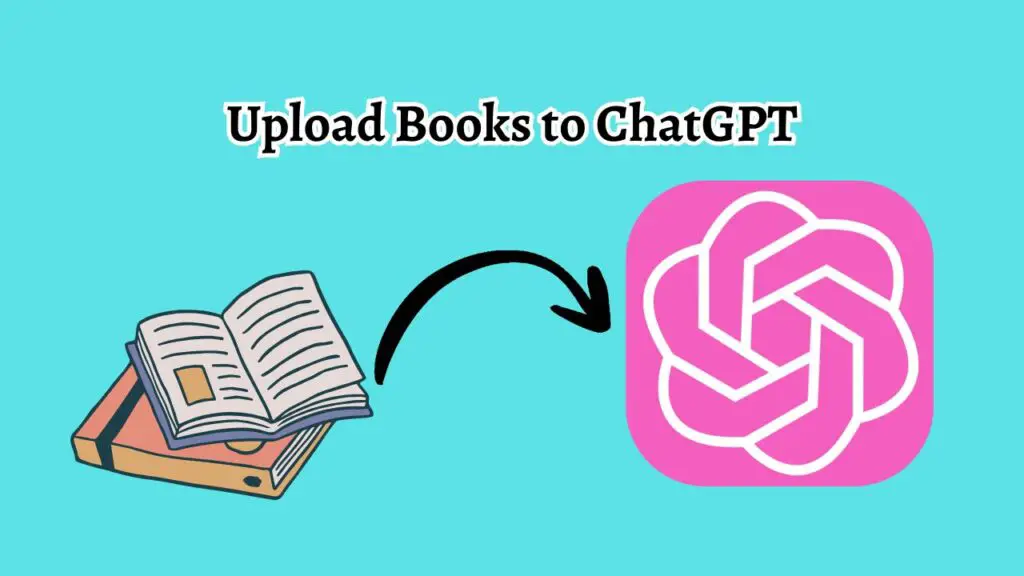ChatGPT has revolutionized the way we interact with AI, but many users wonder how to feed large texts, like books, into the system for analysis, summaries, or Q&A sessions. While ChatGPT doesn’t allow direct uploading of files in its standard interface, there are several ways to share book content efficiently, including converting it into text format or using APIs.
This guide will take you through the process step by step.
Outline
- Convert your book into a text-friendly format, such as .txt or Word.
- Break the book into chapters or sections to avoid input limits.
- Paste each section into ChatGPT with clear instructions.
- Ask ChatGPT to summarize, analyze, or answer questions about each section.
- For very large books, consider using the OpenAI API for automated input.
How to Upload Books to ChatGPT: A Step-by-Step Guide

Step 1: Convert Your Book to a Text-Friendly Format
The first step is to make sure your book is in a format that ChatGPT can process. Most books are available as PDFs, ePub, or Word documents. To upload the content, you’ll need to convert it into plain text (.txt) or copy the text into a document that you can easily paste into ChatGPT. There are free tools online that convert PDF or ePub files into text without losing formatting.
Step 2: Break the Book into Manageable Sections
ChatGPT has input limits, so you cannot input an entire book at once. Divide your book into chapters, sections, or smaller chunks of text. This ensures the AI can process each part accurately and avoids exceeding the token limits of the model.
For longer books, numbering sections will help you keep track of what has already been uploaded.
Step 3: Open ChatGPT and Prepare Your Prompt
Once your text is ready, open ChatGPT in your preferred browser or app. Begin by giving a clear instruction, such as “I will provide sections of a book. Please summarize each section as I send them.” This helps ChatGPT understand how to handle the content.
You can also specify if you want a summary, analysis, or Q&A format.
Step 4: Paste Each Section Sequentially
Copy the first section or chapter of your book and paste it into the ChatGPT prompt. After ChatGPT processes the input, you can continue with the next section. Avoid pasting large chunks at once; instead, feed content sequentially to maintain accuracy and context.
Step 5: Ask for Summaries or Notes
After pasting a section, you can instruct ChatGPT to create a summary, extract key points, or answer questions about the text. For example, you might type: “Summarize this chapter in three paragraphs,” or “List all key events in this section.”
Repeat this process for each section until the entire book is processed.
Step 6: Use Tools or APIs for Large Books (Optional)
For users who want to upload entire books without manually copying sections, OpenAI’s API allows programmatic input of text. Developers can split the book into manageable chunks and send them to the API for processing.
This approach is ideal for automation, research, or advanced workflows.
Tips to Mark
- Always check formatting after converting your book to text; messy formatting can confuse ChatGPT.
- Label sections clearly (Chapter 1, Chapter 2, etc.) to maintain order.
- Keep your prompts consistent to get uniform summaries across sections.
- Consider saving outputs in a document as you progress to avoid losing results.
- For very large books, consider compressing text or summarizing sections before feeding them into ChatGPT.
Frequently Asked Questions
Can I upload a PDF directly to ChatGPT?
No, ChatGPT does not allow direct PDF uploads in the standard interface. You need to convert the content to text first.
Is there a size limit for text input?
Yes, ChatGPT has a token limit per input. For large books, break them into smaller chunks.
Can ChatGPT summarize an entire book at once?
It’s not recommended. The AI works best with smaller sections to ensure accurate processing.
Are there tools to automate book uploads to ChatGPT?
Yes, OpenAI’s API can process books programmatically in chunks, which is ideal for long texts.
Conclusion
Uploading books to ChatGPT allows you to leverage AI for summaries, analysis, and interactive learning. By converting your book to a compatible format, breaking it into sections, and feeding it systematically, you can make the most of ChatGPT’s capabilities.
Whether you use the standard interface or the API, following these steps ensures accurate and efficient processing of your book content.